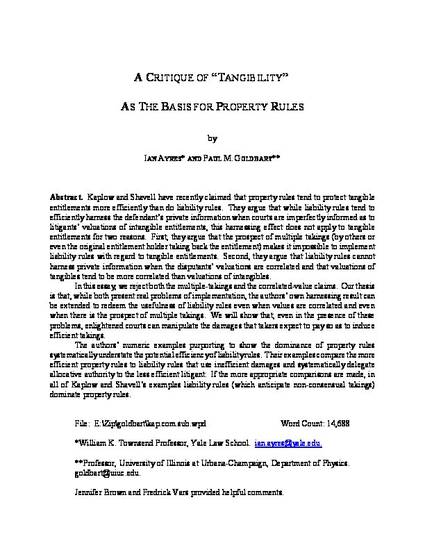
Kaplow and Shavell have recently claimed that property rules tend to protect tangible entitlements more efficiently than do liability rules. They argue that while liability rules tend to efficiently harness the defendant’s private information when courts are imperfectly informed as to litigants’ valuations of intangible entitlements, this harnessing effect does not apply to tangible entitlements for two reasons. First, they argue that the prospect of multiple takings (by others or even the original entitlement holder taking back the entitlement) makes it impossible to implement liability rules with regard to tangible entitlements. Second, they argue that liability rules cannot harness private information when the disputants’ valuations are correlated and that valuations of tangibles tend to be more correlated than valuations of intangibles.
In this essay, we reject both the multiple-takings and the correlated-value claims. Our thesis is that, while both present real problems of implementation, the authors’ own harnessing result can be extended to redeem the usefulness of liability rules even when values are correlated and even when there is the prospect of multiple takings. We will show that, even in the presence of these problems, enlightened courts can manipulate the damages that takers expect to pay so as to induce efficient takings.
The authors’ numeric examples purporting to show the dominance of property rules systematically understate the potential efficiency of liability rules. Their examples compare the more efficient property rules to liability rules that use inefficient damages and systematically delegate allocative authority to the less efficient litigant. If the more appropriate comparisons are made, in all of Kaplow and Shavell’s examples liability rules (which anticipate non-consensual takings) dominate property rules.
Available at: http://works.bepress.com/ian_ayres/3/
